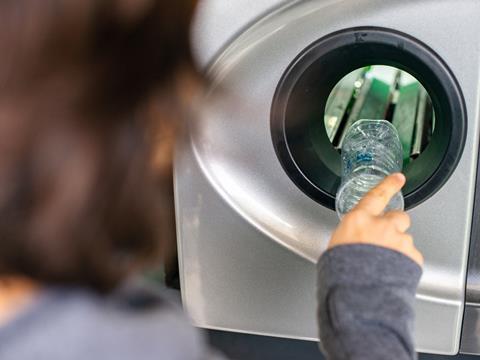
Extended producer responsibility, track and trace, and deposit return schemes will all undoubtedly be key drivers of innovation throughout the next year and beyond. But what role could smart packaging play to facilitate these new technologies? Andrew Manly, communications director at AIPIA, tells us more.
We live in a highly disrupted world and, given the number of unexpected events that have occurred in the last 2+ years, all of which profoundly impacted our industry, it may be more than foolish to offer any predictions about what is coming in the next 12 months.
In addition, smart packaging is, by its own admission, a highly disruptive industry and prides itself on doing the unexpected. But it is the fashion to try and see some signposts about the year ahead, and perhaps AIPIA is best placed to offer some insights for the smart packaging ecosystem. So here are just a couple of illustrative examples.
Perhaps the clearest indicator of the way 2023 is going to go is in the amount of legislation that is about to take effect, or finally be fully implemented. Extended User Responsibility (EPR) for packaging is already used by several governments to shovel responsibility regarding collection, recycling and all things circular onto brands and retailers - from raw materials sourcing to end-of-life and recycling. It came into force in the UK on 1st January 2023.
Cynically, and l speak for myself here, it seems a great way for governments and local governments to wash their hands of the issue. Teamwork? Not on their agenda, it seems…
Brands already address design and resource issues and have done so for a long time, but now it’s everything else as well. One thing is clear, to operate an effective EPR scheme you need data! This is taken directly from the UK Government website:
To support EPR and other sustainability efforts, manufacturers must gather, manage, and understand an enormous amount of data and information – from ensuring the provenance of raw materials, to informing customers of eco-friendly initiatives and recycling options. Compliance must be assured, processes must be streamlined and automated, and designers and manufacturing teams must communicate and collaborate in real-time.
To gain the speed, visibility, and sophistication needed to achieve EPR and sustainability goals, businesses are turning to cloud-connected, AI-driven software solutions that integrate with their existing systems to leverage the power of data.
Do brand owners and retailers realise the opportunities that Smart Packaging provides in terms of achieving these goals? We shall see!
Another area of legislation that will really begin to bite soon are the track & trace regulations for pharmaceuticals under the DSCSA regs in USA. Ready or not, the DSCSA will be in full force come November 2023. The FDA believes it can save the pharmaceutical industry significant time and resources through easily accessible data, which makes tracking packages across the supply chain simple. There is that D word again!
Given the huge market for medicines in the USA, it would seem a no-brainer to implement smart packaging solutions to meet the demands of the Act. Let’s not forget we already have FMD in Europe (and a hybrid in the UK) and these T&T requirements are mirrored, or will be soon, in many markets around the world.
Another fine example of regulation leveraging innovation is the plethora of Deposit Return Schemes (DRS) which seem to be appearing all over the place. Of course, the intention is worthy and, in the drive for a resource-efficient world, does seem necessary.
Encouraging the return of containers for reuse or easier recycling sounds great. But once again the D word comes into play. Do consumers understand DRS and how to operate it? Once the bottle is returned do the recyclers deal with it efficiently?
Both need information/data. Consumers need to be engaged (via QR codes?) about the process. While the digital marking technology now widely available (Holy Grail, etc) helps recyclers to separate different plastics and other materials to ensure these are handled properly and cost-effectively. Once again, smart packaging technologies can offer simple solutions.
There is so much more one could write on just this issue alone. At both an operational and strategic level, the data available through smart packaging can really make a difference. The onus is on us to keep delivering that message and on the brand owners and retailers to tune in a bit more to the possibilities.
In a recent AIPIA newsletter, one item suggested Digitisation in packaging may become more important than Sustainability. That might be a bit premature for 2023. But the fact is they can work in closer harmony – if allowed – to make a real difference. Now that is Smart Packaging!
This article was created in collaboration with AIPIA (the Active and Intelligent Packaging Industry Association). Packaging Europe and AIPIA are joining forces to bring news and commentary about the active and intelligent packaging landscape to a larger audience. To learn more about this partnership, click here.












No comments yet